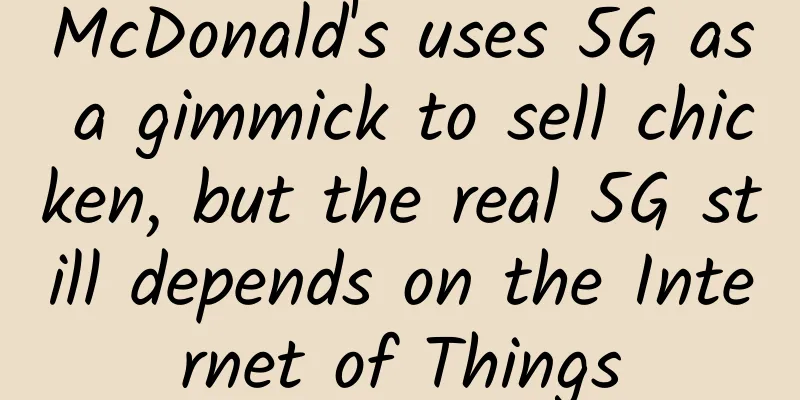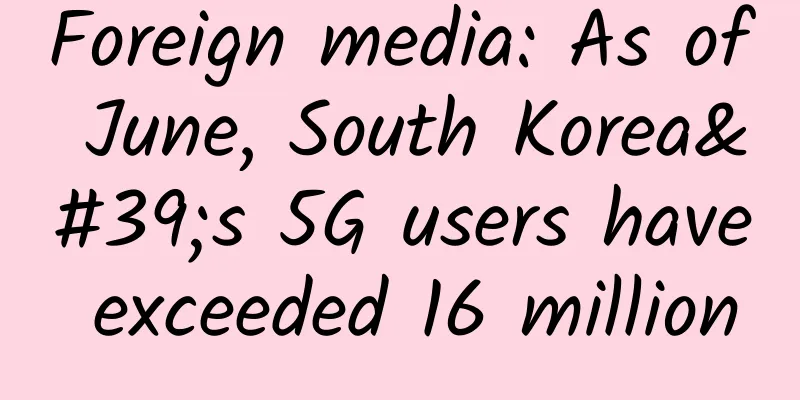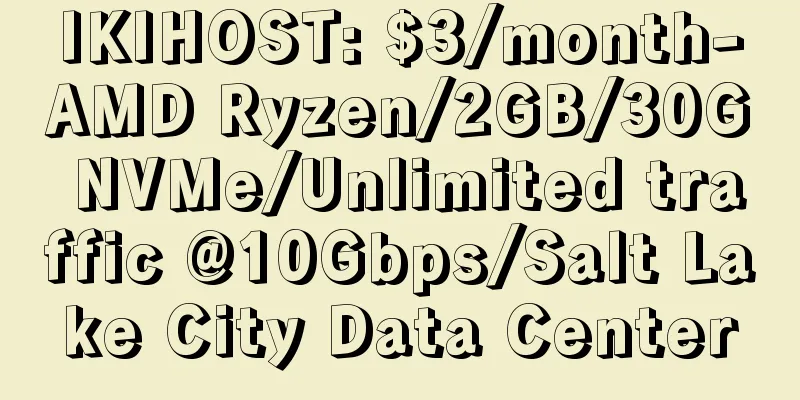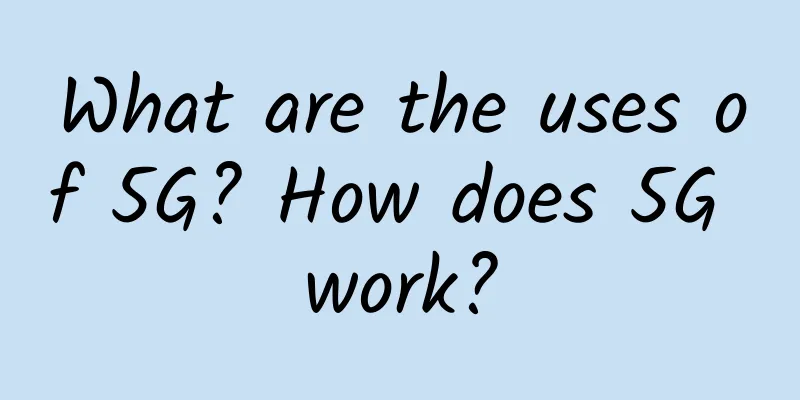McDonald's uses 5G as a gimmick to sell chicken, but the real 5G still depends on the Internet of Things

|
In the past two days, a marketing campaign that originally only excited the food circle has suddenly become popular and attracted the attention of people in the communications circle. What is going on?
It turns out it was because of McDonald’s 5G! This is probably what happened: At around 9 am on April 13, McDonald’s official Weibo account posted several consecutive Weibo posts with the theme #我5G了#. The copy and posters of each Weibo post were full of the flavor of technology. To judge whether a marketing campaign has a wide range of influence, you can see whether it is on the hot search list, such as Weibo hot search, Toutiao hot search, Zhihu hot search or Douyin hot search. But according to enthusiastic netizens, it seems that it was not arranged this time, emmmmmm~ However, the new 5G product, the world's first release, and the free trial all touch people's nerves. Although it did not become a hot search, this did not prevent many netizens from speculating about what this new product is. After a simple sorting, there were probably several directions before:
Speculations aside, this new product was finally unveiled this morning. As expected by netizens, it is the McMahon Crispy Chicken, which has five "black technologies" including "big chunks", "flavorful", "tender", "juicy" and "crispy". Emmmmm~What should I say? Just give a thumbs up to this marketing gimmick. However, in this era of information explosion, it is indeed difficult to achieve explosive publicity effects by relying on the power of a single product. Cross-border marketing is a very common marketing method. Coupled with the recent intensive release of 5G terminals, this time McDonald's cleverly took advantage of the 5G hotspot and combined it with its own products to leverage the marketing of new products. McDonald’s is not the only one leveraging 5G marketing 2019 is recognized as the first year of 5G commercialization, and 5G will still be a very hot topic and focus this year. 5G, cloud computing, big data, sensors, IPv6, etc. are all important technologies in the era of the Internet of Things, but 5G is not like these Internet of Things related technologies. It is closer to the general public and more friendly to the people. Therefore, not only Internet of Things companies, but all kinds of companies are likely to seize this hot spot! In fact, before McDonald's, there were already many cases of leveraging 5G marketing, some of which were real 5G and some were fake 5G, some were strongly related and some were weakly related:
There is no doubt that everyone wants to join in the fun and see if their products can produce some magical "chemical reaction" with 5G. However, although it is good to take advantage of the situation, don't "overdo it". After all, not every "posture" of taking advantage of the situation is right. It is not a big deal if it fails to bring the expected effect. Some forced hot spots will also lead to the consequence of being "named". Before brands take advantage of 5G, they should first understand what 5G is. The so-called 5G communication refers to the fifth generation of mobile communication network. It is a general term for the next generation of communication network after the maturity of 4G communication technology. It has the characteristics of high speed, ubiquitous network, low power consumption and low latency. Its main application scenarios include eMBB (enhanced mobile broadband), uRLLC (ultra-reliable and low-latency connection) and mMTC (massive machine-type computing). 5G can roughly cover two mainstream frequency bands, one is sub 6GHz, which is not much different from the 4G LTE band we currently use; the other is above 24GHz, which is the millimeter wave band commonly heard today. 5G networks provide the most suitable wireless network in different environments through millimeter wave broadband technology that focuses on speed and sub 6GHz narrowband technology that focuses on low power consumption and wide coverage, so as to meet both short-distance and long-distance communication requirements. When high bandwidth (eMBB) and low latency (URLLC) are required, high-frequency millimeter wave bands are suitable, such as self-driving cars and remote surgery; when low power consumption, wide coverage and stable connection (mMTC) are required, sub 6GHz low-frequency bands are more suitable, such as smart city-related applications. 1. Interpretation of 5G hot words: micro base station When communication technology is deployed to higher frequency bands, the diffraction ability of electromagnetic waves becomes weaker, and the transmission distance and coverage range will be relatively reduced. Therefore, in the 5G era, multiple micro base stations must be used to cover as many areas as possible. 2. 5G Hot Words: Massive MIMO MIMO refers to multiple-input multiple-output, which means that multiple antennas are used for sending and receiving, making data transmission faster. According to the principle of electromagnetic waves, the shorter the wavelength, the smaller the antenna can be made. In the 5G era, as antennas gradually become millimeter-sized, more antennas can be packed into mobile terminals and micro base stations, allowing the existing MIMO to be enhanced to Massive MIMO, bringing the speed to a higher level. 3. 5G Hot Words: Beamforming Just like a glowing light bulb, electromagnetic waves transmit signals by radiating in all directions. However, in actual needs, the signal only needs to be transmitted in a certain direction, which results in most of the electromagnetic wave energy being wasted. To solve this problem, beamforming technology is used. This technology can send and receive signals in a direction through an antenna array. It converts the existing omnidirectional coverage into precise directional transmission by superimposing the signals transmitted or received in a specific direction, which not only extends the transmission distance, but also greatly reduces signal interference. The infinite possibilities of 5G and the Internet of Things It is interesting to look at how people in the past predicted the future from this point in time. Looking back at the time when 4G was first put into commercial use, no one knew what would happen in the future. It was predicted that 4G would allow viewing of high-definition videos, facilitate viewing of movies on mobile phones, and that live video would be applied to the news field. However, who would have thought that the complete explosion of short videos would also usher in an era of universal live video, turning cameras into input methods and short videos into the standard of expression. Of course, the rise of online payment, e-commerce, food delivery, taxi-hailing and other platforms are all disruptive results brought about by the 4G era. At that time, most articles did not predict that 4G would cultivate the towering tree of mobile Internet. Today, we also have reason to believe that the fertile soil of 5G will bring more things beyond most people's imagination and derive more unexpected applications in the era of the Internet of Things. Note: All pictures in this article are from the Internet. If there is any infringement, please contact us to delete them. |
>>: Wi-Fi 6 applications are in sight, which may trigger another wave of IoT development
Recommend
Understanding Lossless Networks in One Article
According to OpenAI's data analysis, the amou...
Adhere to innovation and sink into the scene Ruijie takes action to keep up with the education informatization 2.0
The three-day 74th China Educational Equipment Ex...
V5.NET: Korea/Hong Kong dedicated server 30% off monthly payment starting from 325 yuan
V5.NET is a business that provides independent se...
Six good habits and 23 lessons that Linux operation and maintenance must know to avoid pitfalls!
I have been engaged in operation and maintenance ...
ProfitServer New Year Russian VPS Hosting 20% off, Moscow/Chelyabinsk Data Center Available
ProfitServer is a Russian hosting company founded...
SD-WAN: A killer way to improve network flexibility and efficiency
Wide area networks are generally used to connect ...
Aruba Launches ArubaESP, the Industry’s First Cloud-Native Platform for the Intelligent Edge
Aruba, a Hewlett Packard Enterprise company, today...
Three ways hotel Wi-Fi supports remote work
Residents are excited about and choosing to live ...
Ten questions about the issuance of 5G temporary licenses: how far is 5G?
Recently, authoritative information about 5G has ...
What is One Network Management? Finally someone explained it clearly
1. Definition of One Network Management Definitio...
MIIT talks about 6G: Breakthroughs in key core technologies are needed
According to the news from the Ministry of Indust...
CloudSilk: San Jose triple-network AS4837 line, 2.5Gbps bandwidth, annual payment starting at 160 yuan
CloudSilk.io is a Chinese hosting company founded...
To promote industrial upgrading, Ascend Academy Technology Open Day came to Shenzhen
On August 11, 2020, the DevRun Developer Salon As...
What does a Web Application Firewall do? How is it different from traditional network devices?
What is a WAF? The full name of WAF is (Web Appli...
Huawei releases full-scenario intelligent connectivity solution
[Beijing, China, October 13, 2020] Today, the 6th...









